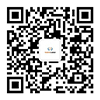At the same time, each port has a certain degree of flexibility in the specific implementation process. For example, in Los Angeles, if the goods do not receive ISF matching information from AMS system 4 days before ETA, customs will put a HOLD ON state (generally, after ISF gets S1, customs will release the goods). However, while imposing a Place Hold on the shipment, Los Angeles Customs will issue fines to importers who continue to post the shipment. Some crossings may still focus on warnings, while others will issue fines immediately.
What is ISF?
For goods exported to the United States, people in the industry know that they need to send an AMS data to them. From January 26, 2009, all goods going to the United States will have to submit a new 10+2 declaration under the premise of submitting AMS.
AMS is also known as the 24-hour Manifest Forecast, also known as the United States Customs Anti-Terrorism Manifest. AMS information is directly sent to the US database through the system designated by the US Customs, and the US Customs system will automatically check and reply. At the time of sending, the detailed information of the goods should be submitted to the past, including the number of gross weight pieces at the port of destination, the name of the goods and the case number of the shippers, the real consignee and consignor (not the FORWARDER) and the corresponding code number. Wait for the US side to accept the ship, if there is HB/L, both copies should be sent. Otherwise, the cargo will not be allowed on board.
The 10+2 declaration is actually a common name for ISF declaration. Namely, the Importer Security Filing (Importer Security Filing) and the additional requirements of the carrier, requiring the United States importer (10 declaration contents) and the shipping company (2 declaration contents), must send the electronic declaration data to the United States Customs through the AMS or ABI system 24 hours before the shipment of the goods. For the ISF declaration operation, importers can entrust their trusted overseas agents to declare on their behalf.
As for the difference between ISF and AMS declaration, the simple distinction is :AMS declaration, mainly the information in the bill of lading, the freight forwarder can control the declaration. However, ISF declaration is mainly an entity in the supply chain, with part of the information in the buyer and part of the information in the seller. How to effectively integrate these information is difficult at the beginning. If the forwarder helps to declare ISF, the relevant information must be collected at the time of booking. If the importer declares by himself, some information must be communicated with the seller when declaring.
Contents of the "10+2" new regulation:
The "2" mentioned here is the reporting requirement of the shipping company:
1. Cargopping loading position planning data
2, loading container status information
The so-called "10" is the requirement to add 10 new information units 24 hours before boarding:
1. Company name and address of the factory
2. The seller's company name and address
3. Buyer's company name and address
4. Name and address of the company to which the goods are delivered
5. Customs registration number of the importer
6. The consignee's US bond number
7. Origin of all goods
8. Customs tariff number
9. Container loading address
10. LCL company name and address


